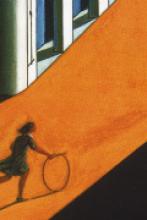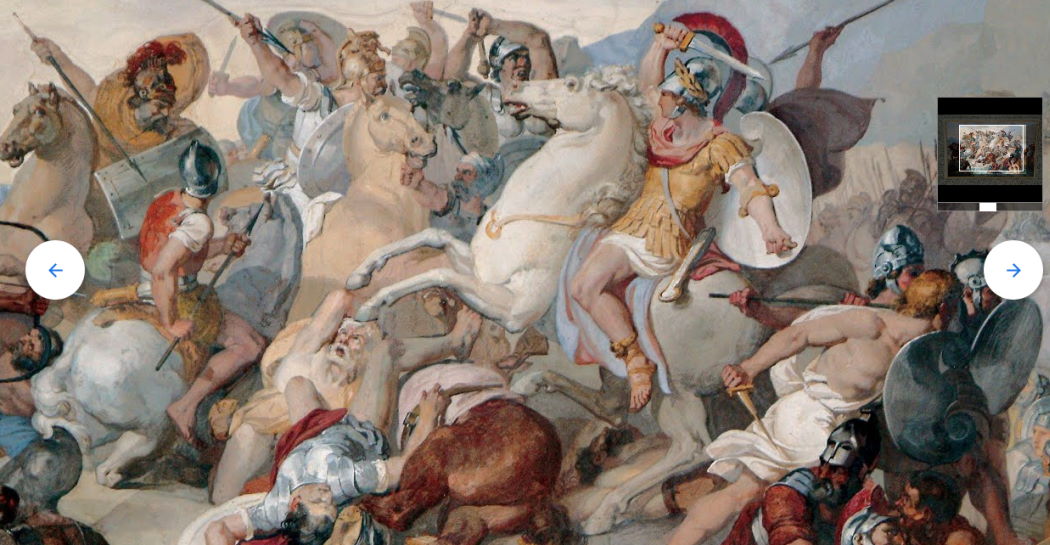The Bunker and the Air-raid Shelters in the Villa Torlonia
Reopened in April 2024 at the end of a restoration project, the bunker receives the public with a new exhibition documenting the life of Mussolini and his family in Villa Torlonia and offers the possibility for visitors through an immersive multimedia experience to recall the dramatic moments of an air raid.

Mussolini at Villa Torlonia
Benito Mussolini's relationship with Villa Torlonia began on 22 July 1925, when it was granted to him as his home at the invitation of Prince Giovanni Torlonia Jr., the last heir of the branch descended from Alexander. Initially the Duce only used the villa for some official meetings; it was only in 1929 that he moved there with his wife Rachele and children.
The building chosen for the residence was the Casino Nobile, which also served as a representative office, welcoming guests on the ground floor, and, in the surrounding square, official meetings, fencing training, parades and receptions. Benito and Rachel's private apartments were on the first floor, while the ballroom was often used as a room for private film screenings.
The Sala di Bacco, on the other hand, was called the Hall of Music because of the large piano often played by the young Romano Mussolini.
Other buildings, such as the Villino Medievale and the Casino dei Principi, were used as dwellings respectively for his son Vittorio and for the widow of his son Bruno and his family.
The construction of the first shelters
With the outbreak of World War II and the first bombings on Italy, it became necessary to ensure Mussolini's safety even inside Villa Torlonia.
The first place identified as a shelter was an underground cellar under the lake called "del Fucino", built by the Torlonia family in the nineteenth century, probably exploiting an old pre-existing cemetery area, and which was accessed through a door in front of the east entrance of the Theatre.
At the end of 1940, the cellar (60 metres long and 5 meters wide) was equipped with gas doors, a filtering and air regeneration system, electric light and other equipment to make the place more comfortable and suitable for extended stays.
However, it soon became apparent that the distance to be covered in the open between the Casino Nobile and the shelter (about 150 meters) was a weakness of the protection system. In addition, the pond under which it was located, clearly visible from above, was an easy target for bombing.
Thus, in 1941 the decision was taken to use a basement room of the Casino Nobile, originally used as a kitchen. Located just below the ballroom, it was strengthened with a layer of reinforced concrete of about 120 cm, equipped with armoured gas doors, and an air purification and replacement system.
The construction of the bunker
This second solution, however, was also judged inadequate to resist the Allies' bombs. Mussolini then entrusted the National Fire Brigade with the construction of a real anti-aircraft bunker under the side square at Casino Nobile, equipped with more advanced materials and techniques. Work began in December 1942 for a planned amount of 240,000 lire, which ended up doubling: in fact, it became necessary to deepen the excavation for the foundations and dismantle a pre-existing underground corridor that connected the Tribuna con Fontana with a "secret" room, commissioned by Alessandro Torlonia.
The new bunker was excavated at a depth of about 6.50 meters, outside the foundations of the Casino Nobile, but it could be accessed directly from the basement of the latter through a long staircase.
Built with a cylindrical shape and protected by 4-metre thick reinforced concrete masonry, the bunker was composed of several compartments based on a cross-shaped layout with two safety exits: one on the side square of the Casino, and another inside the Tribuna con Fontana, which could be reached after walking through an underground corridor.
Mussolini, however, never had the opportunity to use the bunker: when he was removed from office on 25 July 1943, the work had not yet been completed. However, the structure served as a refuge for the inhabitants of the Villa and the neighbouring district during the German occupation.
The modern layout of the bunker
The bunker offers a visit in which the historical-documentary approach, which harks back to the Rome of the Second World War and Mussolini's choice to make the Villa his residence in the city, is accompanied by an immersive experience, where you can get a sense of what it was like to be in an underground shelter during an airstrike.
The exhibition itinerary therefore begins with a "historical" part in which the life of Mussolini and his family in the Villa are documented, as well as the construction and alterations of the anti-aircraft bunker and the Allied bombings that hit Rome from 1943.
Followed by three rooms featuring a multimedia setting, with synchronised projections and sound spatialisation that map out a single scenario, reconstructing small episodes of what life was supposed to be like in an air-raid shelter.
One of the rooms, through a steep staircase, leads to the last stage of the exhibition: the actual bunker.
The ability to imagine the sensations of being in the middle of an aerial incursion is aided by quite a realistic simulation that adds the vibrations of the ground to the sound part (sirens, approaching planes, detonations), made with 10 transducers placed under the floor planks.
The exit from the bunker leads directly to the gardens of Villa Torlonia.
Access Information
The Bunker and the bomb shelters are only accessible with a guided tour
Hours, costs and booking methods > Guided tour of the Bunker and the air-raid shelters

























































